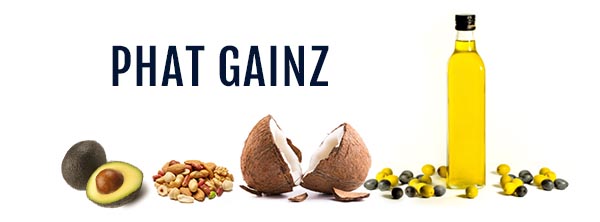
Fat calories and where they come from
Now, you are probably at the point of wondering, what fat does and what is it exactly?EnergyFat is one of our three essential macronutrients also weighing in at the most energy dense 9 kcal per 1 gram. Meaning they can keep us fuller for longer while sustaining energy under light intensity.
The simplest unit of fat is the fatty acid, of which there are two types: saturated and unsaturated (monounsaturated & polyunsaturated). Three fatty acids can form together to make a glycerol molecule, called a triglyceride. Triglycerides are the major form of fat in the diet, and the major storer of fat found in the body. Each food may have a dominant type dictating it’s classification, but understand that most dietary foods are triglycerides and are a combination of saturated and unsaturated fats.
We like to classify animal and dairy products, such as whole milk, cheese, beef, veal, lamb, pork and ham, and even coconut oil, as saturated fats. They can be used by the liver to make cholesterol, which is involved in the production of hormones such as testosterone. Which is why saturated fats are a good choice as they keep our body’s hormone production leveled.
Monounsaturated fats are found in vegetable and nut oils, such as olive, peanut and canola. They can help lower LDL, or bad cholesterol without lowering HDL, or good cholesterol. Lastly, polyunsaturated fats are in things like corn, soybeans, safflower and sunflower oils.
Your brain loves to store fat if stress levels are high so we have energy to fight or flight (run) to ensure survival.
Dietary fat has six major roles:
● It provides an energy source (the most energy dense macronutrient)
● It helps manufacture and balance hormones
● It forms our cell membranes
● It forms our brains and nervous systems
● It helps transport the fat soluble vitamins A, D, E, and K
● It provides two essential fatty acids that the body can’t make: lin-o-leic acid (an omega-6 fatty acid), and lin-o-lenic acid (an omega-3 fatty acid).
Now that said, not all fat is created equal. There is good fat like the ones discussed above, and bad fat mainly in form of transfat.
Trans fats
Created through hydrogenation. Polyunsaturated oils are altered through hydrogenation, a process used to harden liquid vegetable oils into solid foods like margarine and shortening. On the other hand, oils that are liquids at room temperature can transpire into trans fats once heated. Avoid trans fat as much as possible.
So lesson learned. Eat more fat. It’s healthy, delicious and can be found abundantly in many of our whole foods. Try these tips next time you’re in the kitchen incorporate more fat into your diet
● Use raw olive oil, and cook with coconut oil rather than using cooking spray
● Don’t be afraid of the egg yolk – that’s that good fat
● Try a handful of cashews , or, a full fat grass-fed yogurt
